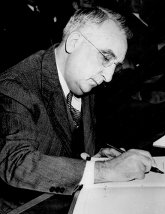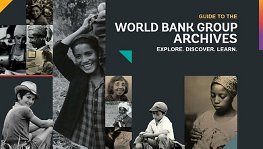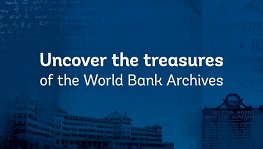
The World Bank Group Archives is frequently asked, “When was the World Bank born?” Well, there isn’t just one birthday for the Bank. There are three! The first came 76 years ago in July 1944, when representatives from 44 nations met at the Mount Washington Hotel in Bretton Woods, New Hampshire. Their objective was to establish a system of international cooperation that would help countries recover from the devastation wrought by the Second World War while facilitating long-term economic growth for recovering and developing nations alike. While years of planning and discussion preceded the conference, it was during these 22 days in July 1944 that the Articles of Agreement for both the World Bank and the International Monetary Fund (IMF) were produced. The last "birthday" came in June 1946 when the World Bank opened its doors for its first day of operation. But what happened in between?
Imagine the delegates at Bretton Woods going back to their home countries in 1944 to advocate for membership in the World Bank and IMF, which would benefit their own economic prosperity and provide tangible benefits of being part of a larger multilateral community of nations. Not only did they need to create and put the legal instruments in place for their national or federal systems, but they were also keeping an eye on the major stakeholders – the United States and the United Kingdom – to see if those governments agreed to sign on. Over the next 18 months the debates within and between governments, in addition to the court of public opinion, were raging, but by early December 1945 it appeared that there were enough countries ready to commit. Indeed on December 27, 1945, 75 years ago this month, representatives from twenty-one countries convened in Washington, DC to become the Bank’s first members, thereby ratifying the Articles and ushering the Bank into existence.
|
Finally, below we provide links to country historic profiles for all the countries that signed the World Bank's Articles of Agreement on December 27th, 1945 and the weeks that followed. Each profile contains information about the Bank’s engagement with the country, such as membership, important “firsts,” and links to other historical resources such as photos, reports, oral histories and more. Browse the profiles and learn more about each country while getting a sense of the information available from the World Bank Group Archives.
These profiles and profiles for other World Bank members are available on our new Country Historic Profiles website. We encourage you to check it out!


